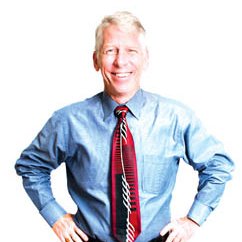
It’s just like SimCity, only it’s real! That was my reaction at Sacramento’s regional forum of the Rural-Urban Connections Strategy, where hundreds of Sacramentans gathered to discuss how to develop a sustainable rural policy that would protect the environment, improve the economy and support a healthier community.
Just as it is hard to figure out how to get somewhere without a map, it’s hard to visualize the outcome of planning decisions without understanding the data. Fortunately, we have the Sacramento Area Council of Governments, which has been receiving national recognition lately, including a front-page story in The Wall Street Journal, for their excellent planning. And fortunately for SACOG, they have David Shabazian. Shabazian is a master at numbers and a Zen master at “what if” simulations. Over the last several years, Shabazian has been analyzing the data to help us answer more and more complicated “what if” planning questions.
I kid you not. Shabazian has a map that displays the soil and weather for every part of our region, as well as what crops could grow there. This information interacts with factors such as fuel costs, labor costs and crop prices to show impacts on our local economy. He can then project expected fallow acreage, job gain or loss and so on. It is a tour de force planning guide for the region.
His simulations clearly show how we could easily screw things up—or make things really great. For instance, if we continue our existing land-use practices, we will totally destroy our $1.9 billion agricultural industry. Or, if we adopt sensible land use practices and increase our local food consumption, we could create a lot of jobs. How?
In a nutshell, the 2 million people who live in the Sacramento region eat a lot of food. We purchase about $1.6 billion of food every year. But even though this is one of the best areas to grow food in the world, only 2 percent of the food that we eat is locally produced. Even though locally grown food tastes a hell of a lot better than the stuff shipped in from out of the area, we have empty fallow land and unemployed and underemployed farmers. By making small adjustments, such as going to farmers’ markets, having schools serve local foods and convincing local supermarkets to stock regionally grown produce, we could significantly increase the amount of local food sold. This would create thousands of jobs and help develop economically viable rural communities in our region.
Just as small changes can make big changes in a SimCity game, small changes can make big changes in our community. And David Shabazian and SACOG have the numbers to show us how.
